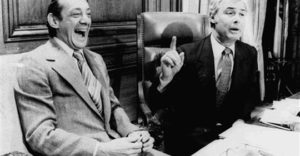
13.7 Billion Years Ago: Bang!
Or was it? That is, what did it sound like, really?
Recently, an 11-year-old boy asked physicist John Cramer this question. And to answer the question, Cramer, working at the University of Washington in Seattle, has made a sound file so that you can hear the Big Bang for yourself.
Here’s how:
NASA runs a project called the Wilkinson Microwave Anisotropy Probe. Anisotropy means that something’s different when you measure it in two different directions. Who needs a word like that? Not something you can use every day, no.
Anyway, this microwave probe measures the temperature of the microwave light in the universe, in teeny-weeny little increments, like a billionth of a degree. During the Big Bang, the universe is thought to have been filled with very hot gas, and lots of light. Gas cools as it expands — that’s why hairspray or WD-40 feels cool when you spray it — so as the universe expanded, the gas cooled down.
But, aside from some condensation into suns and planets, the same gas still fills our universe, only it’s really thinned out and cooled down. The same light has travelled a long way, but it’s still around, too.

By measuring microwave light in teeny-weeny increments, in all directions, scientists have made this picture of the oldest light in the universe (kind of like taking a picture of an 80-year-old man which shows him as an infant).
And from these same measurements, John Cramer calculated the frequencies of the sound waves moving outward through the first 760,000 years of our universe, when it was only 18 million light-years from one side to the other.
These sounds waves are such low frequency that we couldn’t hear them, so Carter has sped them up 100,000 billion billion times, to move them into the narrow range our ears can hear.
Now we can hear from the loudness and pitch what happened in the early universe. You’ll hear the frequencies fall during the recording because the sound waves become stretched as the universe expanded.
And now, for your listening pleasure:
 San Francisco, November 27, 1978: I was living in the studio apartment at
San Francisco, November 27, 1978: I was living in the studio apartment at 



